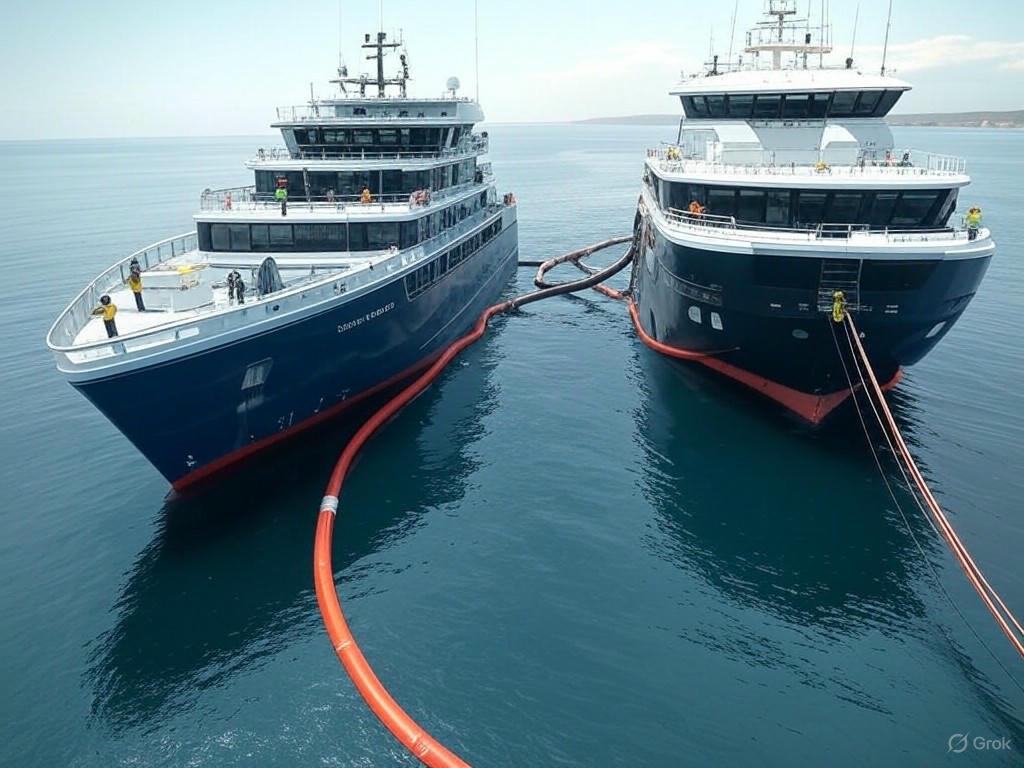In a significant leap for maritime decarbonization, the world's first ship-to-ship (STS) ammonia transfer at anchorage was successfully conducted at the Port of Dampier, Australia. This operation marks a pivotal step in realizing ammonia as a viable alternative marine fuel, with potential to drastically reduce greenhouse gas emissions associated with global shipping.
Spearheaded by the Global Centre for Maritime Decarbonisation (GCMD), this trial was part of a consortium effort including Yara Clean Ammonia and the Pilbara Ports Authority. Two vessels were central to this operation: the Green Pioneer, an ammonia carrier owned by Mitsui O.S.K. Lines, and the Navigator Global, owned by Navigator Gas. Over six hours, they executed a dual transfer of 2,715 tonnes of ammonia, not once, but twice. This approach reflects the delicate maneuvers necessary to replicate the dynamics of traditional bunkering operations, using a substance that doesn't emit CO2 when burned [1].
Safety held paramount importance during this trial. The partnership employed rigorous procedures and emergency protocols, including the use of hot-gas and nitrogen purging post-transfer. This ensured the highest safety standards were met. These safety measures, developed in collaboration with government agencies and port authorities, underline the consortium's commitment to addressing the hazards differently than for conventional fuels [2].
The implications of this trial extend beyond immediate environmental impacts. The successful transfers showcase the operational viability of future ammonia bunkering. Moreover, the operation enhances the Pilbara region's potential as a hub for green ammonia, a critical component in transitioning to low-emission fuel pathways. With global shipping contributing 3% of total greenhouse gas emissions, integrating ammonia as a fuel aligns strategically with the International Maritime Organization's decarbonization targets, anticipated by industry leaders like Professor Lynn Loo, CEO of GCMD [3].
As we step into a future where ammonia bunkering could become as commonplace as traditional fueling methods, the knowledge and experiences gained from this pilot will inform future projects. This includes addressing logistical challenges and ensuring compatibility across global shipping lanes. It’s an encouraging leap towards transforming the maritime industry into a cleaner, more sustainable sector.
References:
1. ‘World’s first’ STS ammonia transfer at anchorage completed (Gallery). Offshore Energy
3. MOL, GCMD and Yara Clean Ammonia Succeeds Ammonia STS (Ship-To-Ship) Trial in Australia Port. MOL







